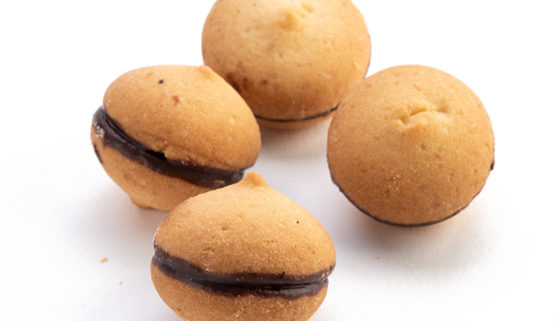DID YOU KNOW THAT…? That’s why the Baci di Dama (“Lady’s kisses) are so called
Imagine to come in the kitchen of the Royal Savoy family and finding a cook who is busy among the bowls, mixing a dough, intent on finding the right alchemy among the ingredients to satisfy the request of King Vittorio Emanuele II to invent a new dessert, with a different taste and shape from those already known.
According to legend, the “baci di dama” (“lady’s kisses”) was born this way, in the autumn of 1852, and the king liked them so much that they were soon served on the royal tables of the rest of Italy and Europe.
The real history – which is always less fabulous than the legend – identifies the true birth of “baci di dama” in a pastry shop in Tortona, a little village in the province of Alessandria.
The reason of such a particular name lies in the shape and composition of the sweet: according to a first version, the kiss would be that which the two small and “bellied” biscuits romantically share to remain united, held together by a greedy layer of chocolate.
A second interpretation, on the other hand, is that the name derives from the fact that the shape of the dessert suggests that of the lips of a tender girl intent in a kiss.
Originally the recipe involved the use of hazelnuts; the cavalier Stefano Vercesi modify the original recipe with almonds. The “baci di dama” were thus presented at the Milan International Exhibition in 1906 and were so appreciated that they won the gold medal, the highest recognition of patisserie of the time.
The recipe for “baci di dama” as we know it today was patented in 1919 by pastry chef Pasquale Balzola and his son Rinaldo (personal pastry chef of the king of Italy Vittorio Emanuele III from 1932 to 1938).
The “baci di dama” are biscuits included by the Ministry of Agricultural, Food and Forestry Policies in the PAT (Typical Agri-food Products) category.
Positano Forno and Cremeria produces two delicious variations: the “baci di dama” in their classic version and the “baci di dama” with cocoa.
To give those who taste them, as always, a sweet moment of delight.







Leave a Reply
Want to join the discussion?Feel free to contribute!